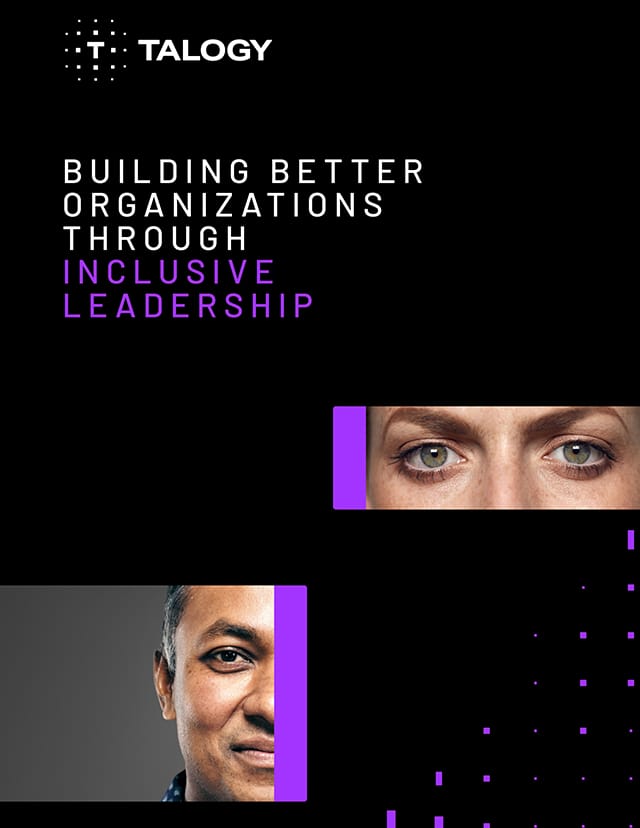Written by Rick Jacobs, PhD, Senior Scientist
A few years ago, three colleagues and I interviewed two dozen Chief Human Resources Officers along with about a dozen scholars who study diversity, equity, and inclusion (DEI) with the goal of understanding the current challenges they see when it comes to enhancing DEI. What was agreed across these discussions was that there has been a general ‘failure to move the needle’ to really have an impact on making organisations more inclusive, more welcoming, and where most feel a sense of belonging. The simple questions we kept returning to were, “What are we missing?” and “What are we doing wrong?”
My friend and colleague, Ali Shalfrooshan, wrote a wonderful blog a few months back and provided a very helpful review of this discussion. Ali’s blog gave us a firm foundation on the topic by clearly defining the three key terms, diversity, equity, and inclusion, and concluding with the idea that together they create a sense of belonging, sometimes referred to as DEI-B. He further advanced the argument that an organisation’s ability to create a sense of belonging requires actions at the individual, team/group, and organisational levels to meet this mission-critical goal. There is no doubt the conversation needs to continue, and we need to put forth ideas that truly work and that actually ‘move the needle.’
I have been a scholar and practitioner of assessment for my entire career and that fact explains why I believe measurement can provide meaningful insights and effectively drive DEI-B success.
Gaining a better understanding of the individual and what the organisation values when it comes to DEI-B is where we begin. When looking through an organisational lens, it is important to understand the policies, practices, and norms that facilitate inclusion. Consequently, every organisation hoping to make an impact on participants’ sense of belonging should have a clear vision of the variables underlying the concept and what underpins a truly inclusive climate.
Often this can be achieved by utilising a model that clearly expresses the DEI-B variables important for organisations and having a definition of each variable. To do this, over the last few years my colleagues have been developing a model of inclusive climate informed by our model of allyship and the work of other academics and practitioners.
Together we have been working with a university’s honours college to help them improve a sense of inclusiveness among students, staff, and faculty. We adopted a rather extensive model with three broad allyship categories and five specific climate dimensions within each category. This is what it looks like:
Appreciates (A)
- Showing respect: Positive regard and consideration for the feelings and perspectives of others
- Embracing intercultural differences: Awareness, acceptance, and understanding of cultural differences
- Managing conflict constructively: Manage conflict in a productive and constructive manner
- Demonstrating open-mindedness: Open to questioning assumptions and biases
- Acting with curiosity: Desire to learn by embracing opportunities to gain a greater understanding of others
Builds (B)
- Promoting psychological safety: Free to speak without negative consequences
- Including various decision makers: Participation in important decisions and belief that opinions are taken seriously
- Creating sense of belonging: Accepted and genuinely cared for by the organisation
- Encouraging authenticity: Acting and feeling true to themselves without negative consequences
- Diversifying teams: Collaboration with a diverse group enhances learning & performance while nurturing positive relationships with all
Champions (C)
- Demonstrating fairness and equity: Creating organisational programmes and practices that explicitly address fairness and equity
- Acting with transparency: Clarity of the organisation’s DEI policies and accomplishments
- Championing change: Continuous drive toward inclusive culture change at every level
- Leading courageously: Leadership demonstrates courage in taking bold steps to advocate for and drive inclusion
- Promoting social responsibility: Policies & practices benefit the organisation, local community, and society
This inclusive climate definition can be used to understand where individuals, groups of individuals, and other aggregated entities stand on current ways of working and organisational policies and where the most work needs to be done.
Armed with information on these 15 climate indicators (or fewer if these are not all relevant in a specific organisation), we can begin planning more targeted programmes that will help address issues directly and improve the sense of belonging in a way that could ‘move the needle.’ This approach of focusing on measuring actionable and important features of an inclusive climate and individuals’ reactions to the current situation provides important first steps in creating actions that lead to DEI-B improvement.
The major takeaway here is that DEI-B is important at every level of analysis. No single programme/solution will address the variety of possible inhibitors or the opportunities to facilitate the process. A solution requires an examination of how individuals feel, how those feelings are shared by various groups, how leadership’s response to identified problems is perceived, and leadership’s support for enhancing belonging, as well as exploring options for institutional changes that might enhance the sense of belonging. The list of areas that need to be investigated is long, but not impossible.
The whole process starts with both the individual employee and their propensity to demonstrate inclusive behaviour along with the organisation and the inclusive climate it creates. Defining what DEI-B means to an individual and an organisation, measuring the important factors contributing to that definition, building programmes that address specific targets for improvement, and continuously monitoring and responding to the challenges that surface are all critical. When people feel like they belong, they also feel empowered – and empowerment leads to success.




